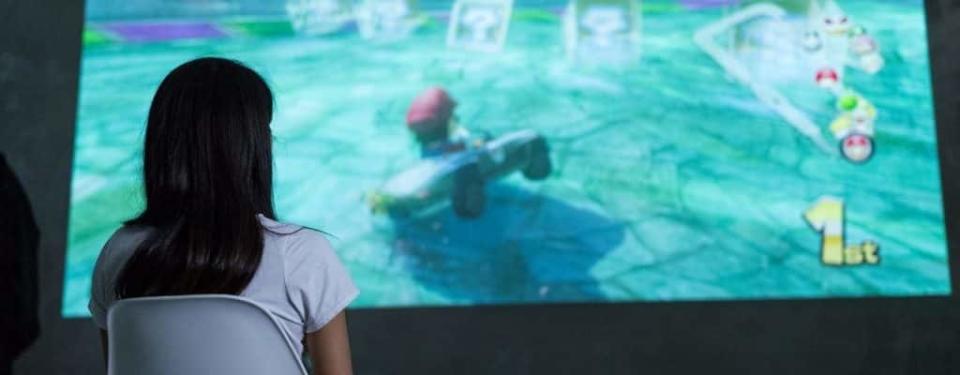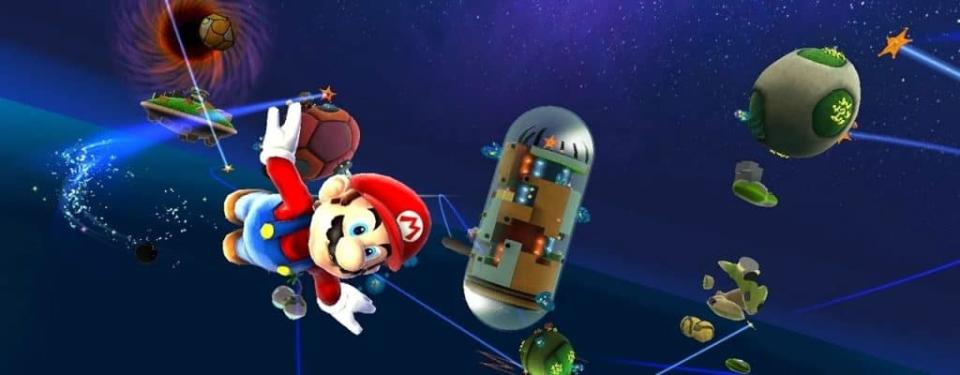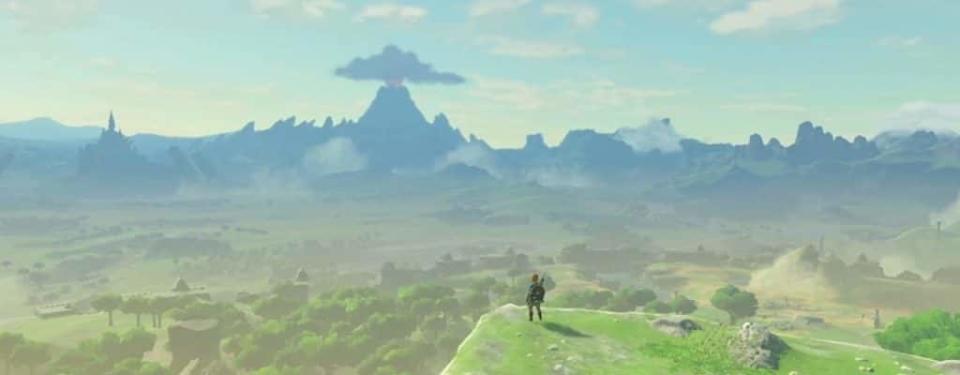Nintendo Changed the Game With These Weird Business Moves
Advertiser Disclosure: At Slickdeals, we work hard to find the best deals. Some products in our articles are from partners who may provide us with compensation, but this doesn’t change our opinions.

The video game industry has changed immeasurably over the past 50 years, and Nintendo has held its spot at the helm of change and innovation for nearly all of them. Staying interesting and relevant has required a lot of hard pivots into new business models and technology, some of which have garnered some interesting results like the Virtual Boy console and the Wii U.
In other cases, Nintendo’s huge success can be directly attributed to its mystifyingly bizarre business practices. Some lucrative choices were calculated decisions and risks, while other brand-defining events were purely happy accidents.
If you are ever surprised by one of Nintendo’s many controversial decisions, it’s worth brushing up on the company’s storied history. Here are some of Nintendo’s weirdest business moves that totally worked out:
1. The Overwrought Nintendo DS Design
Longtime Game Boy fans were dismayed when the Nintendo DS made its public debut at E3 2004. Completely against common sense, Nintendo had replaced their beloved sturdy handheld with this bulky monstrosity toting two screens, two D-pads and a stylus.
The first couple of years were rocky in terms of release success and public opinion, but Nintendo stayed the course and finally reaped the fruits of its labor when the Nintendo DS Lite became a smash hit in 2006. Strange new experimental video game genres began to emerge with titles like Nintendogs and Brain Age Academy, which relied on the handheld console’s unusual form factor that drew such bad press just two years prior.
The tides turned quickly — the Nintendo DS and its offshoots went on to become the most popular handheld console line of all time. Its catalog has undeniable staying power as well; Nintendo DS games are some of the rarest and most expensive titles on the resale market today.
2. Avoiding Deals and Markdowns
If you’ve ever had your feelings hurt by an underwhelming (or nonexistent) Nintendo Black Friday sale, you know all too well how rare it is to find a deep Nintendo discount. This can be off-putting to frugal consumers and casual players, but there is a method behind the madness.
Satoru Iwata, the late, great president of Nintendo explained the lack of flashy deal ads and price cuts in a Q and A conference with investors. Iwata emphasized putting effort into the quality of the product to make consumers feel that it is worthwhile at its price, as opposed to relying on deals and ads to create that same feeling of value.
You might not agree with this business decision, but it has clearly worked for Nintendo. Consoles, new titles and old classics alike commonly retail at (or even above) list price for years after they’ve been released, a clear testament to each Nintendo fan’s valuation of the company’s products.

3. Taking Its Good, Sweet Time Finding the Right Market
Today, Nintendo is solidly locked into its niche as a video game standby, home to dozens of popular first-party franchises. Some fans have criticized Nintendo for its conservative business approach and general unwillingness to push the envelope, especially compared to Sony and Microsoft, its major competitors.
In Nintendo’s defense — the company experimented with just about every other business model before it landed on Mario, Donkey Kong and Link. The Nintendo Playing Card Co. was founded in 1886, in response to the Meiji Government’s recent legalization of hanafuda playing cards. Yakuza gangsters were its target audience, as they frequently gambled with Nintendo’s hanafuda cards.
Between the 1950s and 1970s, Nintendo tried its hand at baby swings, ballpoint pens, instant rice, LEGO-style blocks, taxi cabs and even “love hotels” before it finally broke into the video game industry with the 1974 release of Color TV-Game. The rest is history.
It pays to take risks and stay patient.
4. Mario Was a Technical Improbability
When Nintendo began production on the original Donkey Kong arcade game in 1981, the company sought design insights from its future game director, Shigeru Miyamoto. Miyamoto had grand visions for his “Jumpman” design, the first iteration of Mario. The programming team criticized his designs for their untenable complexity — even though his hat and mustache were only present to distract players from noticing that his head and hair couldn’t move.
Dedicated to his vision, Miyamoto negotiated with the rest of the Donkey Kong team and stood behind his design choices, no matter how the other developers felt. This decision on Miyamoto’s part changed the trajectory of Nintendo’s brand permanently — Mario has retained his signature look for decades, even if he’s taken a few new jobs in the meantime.

5. Changing the Nintendo Revolution to the Wii
After the GameCube became old hat, Nintendo fans waited for news on the upcoming “Nintendo Revolution” console with bated breath. Ahead of its E3 appearance in 2006, Nintendo released a statement where it excitedly proclaimed that the next-gen console’s name had been changed to the “Nintendo Wii.” Fans took out their frustration on what they perceived to be a dumb name and an even stranger business decision by cracking every foul “Wii” wordplay joke they could imagine.
This ended up being a smart move on Nintendo’s part. Video game media identified the shift as “an attempt to break the new console away from the traditional games market,” hence the unusual name — and given the Wii’s unique style of gameplay they were absolutely right. Today, the Wii is considered the top-selling non-PlayStation console of all time.
6. Nintendo Made a Killing by Killing the NES/SNES Classic
Nintendo’s unusually successful decisions are not always to our benefit. This is certainly true for the controversial cancellation of the NES and SNES Classic consoles, which sold out almost immediately after they hit the shelves in September 2017. Fans and the media have speculated that this decision was an attempt to generate extra value using artificial scarcity tactics, ensuring that fans will always be ready to spring into action and buy their next release before it disappears.
Well, it worked. Earlier this year, the company expanded its Nintendo Switch Online program to include access to SNES and NES games for a monthly fee of $3.99. Of course, you don’t get all of them right away — there are 20 games included and you can purchase game bundles for an additional fee.

7. Only Selling Super Mario 3D All-Stars for Six Months
Fans reacted positively to the announcement of Super Mario 3D All-Stars, a port of three popular Mario platformers from older consoles. However, Nintendo’s decision to pull the game from shelves six months after its release did not go over well with the fanbase.
Disappointed Mario fans may have verbally spoken out against Nintendo’s questionable limited run, but it didn’t stop them from buying over five million copies less than two weeks after it was released. Another spike was recorded at the end of March 2021, when the game was slated to be removed from stores.
Once again, Nintendo’s win is not always the consumer’s win. That’s business!
8. The Auspicious Delay of Animal Crossing: New Horizons
Animal Crossing fans felt all but forgotten in the six-year doldrums between New Leaf‘s 2012 release and the first mention of New Horizons at E3 2018. This set the stage for further disappointment when the proposed Summer 2019 release window came and went. Nintendo clarified that the release of Animal Crossing: New Horizons had been delayed to March 2020 during its presentation at E3 2019.
This was (hopefully) not cunning prescience on Nintendo’s part, but the new release date was actually perfect — a deadly virus had recently upgraded to a global pandemic, leaving millions trapped at home looking for distraction and entertainment. Playing a real-life simulator where you socialize, take care of simple tasks and wear cute clothes proved to be a crucial remedy for quarantined gamers across the globe, and it couldn’t have happened without Nintendo’s unreliable release schedule!

9. Making Decisions Very, Very Slowly
Nintendo has built its legacy on signature franchises like Mario, The Legend of Zelda and countless spinoff and crossover titles, but this fixation on “what works” leaves little room for experimentation. A former Nintendo indie game developer attributes this choice to a “traditional” working style, which requires meticulous group decision-making all the way down a long chain of command. If everyone isn’t immediately on board, an idea will most likely wither away on the cutting room floor.
It’s fair to say that this business tendency puts lesser-known developers at a major disadvantage, but the principle is not necessarily misguided — these signature franchises from the 1980s have widespread appeal and some of the company’s greatest (and most recent) successes have come from constantly reimagining the story of Link, how many jobs Mario can have and how many fighter-characters can possibly fit on a screen. Given the unbelievable amount of positive press surrounding The Legend of Zelda: Breath of the Wild, this decision-making process has its benefits.
10. The Nintendo 64 Came Out Much Later Than Expected
In sharp contrast to its present-day announcement cycle tendencies, Nintendo played off the ridiculously delayed release of the Nintendo 64 like it was part of the magic. First known as “Project Reality” and later codenamed “Ultra 64,” Nintendo’s follow-up to the SNES was surrounded by mystique and curiosity during the early years of its development process.
The Nintendo 64 was formally revealed in late 1995, supposedly in preparation for a Christmas 1995 release. That did not happen. The release date was pushed to April 1996, which also did not happen. Nintendo covered for this slip-up by explaining that the console and its developers needed to make sure everything was perfect, bolstered by an ad campaign with slogans including “Wait for it…” and “Is it worth the wait? Only if you want the best!”
Ultimately, they weren’t wrong. The N64 received widespread acclaim, namely for its cutting-edge technology and promising selection of new video game titles.
Now that you know more about the mystery behind Nintendo’s business practices, you can use this knowledge to make informed and well-timed purchases. You can start by setting up a Deal Alert, we’ll let you know when the console or game you’d like goes on sale.
More to consider:
Our editors strive to ensure that the information in this article is accurate as of the date published, but please keep in mind that offers can change. We encourage you to verify all terms and conditions of any product before you apply.

